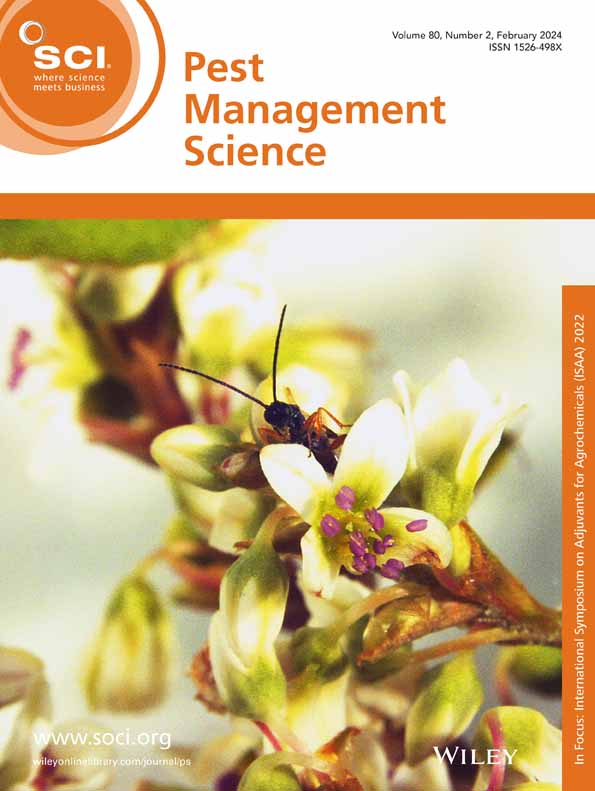Design, synthesis, and biological evaluation of novel luteoride A derivatives against phytopathogenic fungi and bacteria
IF 3.8
1区 农林科学
Q1 AGRONOMY
引用次数: 0
Abstract
BACKGROUNDPlant diseases caused by phytopathogenic fungi and bacteria represent a critical barrier to sustainable agriculture, significantly compromising crop yield and quality. Natural products have been a significant source of effective and low‐risk pesticides. In this study, a series of novel indole derivatives, 4a–4o and 5a–5o, were synthesized based on the structure of luteoride A and evaluated for their antimicrobial properties.RESULTSCompound 4c showed excellent新型叶黄素A衍生物的设计、合成及抗植物病原真菌和细菌的生物学评价
植物病原真菌和细菌引起的植物病害是可持续农业的重要障碍,严重影响作物产量和质量。天然产品一直是有效和低风险农药的重要来源。本研究基于木犀草素a的结构合成了一系列新的吲哚衍生物4a - 40和5a - 50,并对其抗菌性能进行了评价。结果化合物4c具有较好的体外抑菌活性,中位有效浓度(EC50)为2.05 mg/L,优于黄体素a (EC50 = 12.8 mg/L),接近市售杀菌剂三氯虫酯(EC50 = 1.44 mg/L)。体内实验进一步证实了化合物4c对离体苹果和离体枝条的马利弧菌具有良好的保护作用。机制研究表明,化合物4c可能通过结合线粒体呼吸链复合物III来抑制马里弧菌。化合物4c的吸收、分布、代谢、排泄和毒性(ADMET)预测表明化合物4c可能具有良好的水溶性和低毒性。此外,化合物5i的抑菌活性显著,特别是对茄枯菌的抑菌活性,其EC50值为7.18 mg/L,超过黄苔素A (EC50 >;阳性对照双巯唑EC50 = 76.7 mg/L。结论本研究为叶黄素A衍生物作为新型作物保护抗菌药物的开发提供了基础支持。©2025化学工业协会。
本文章由计算机程序翻译,如有差异,请以英文原文为准。
求助全文
约1分钟内获得全文
求助全文
来源期刊

Pest Management Science
农林科学-昆虫学
CiteScore
7.90
自引率
9.80%
发文量
553
审稿时长
4.8 months
期刊介绍:
Pest Management Science is the international journal of research and development in crop protection and pest control. Since its launch in 1970, the journal has become the premier forum for papers on the discovery, application, and impact on the environment of products and strategies designed for pest management.
Published for SCI by John Wiley & Sons Ltd.
 求助内容:
求助内容: 应助结果提醒方式:
应助结果提醒方式:


